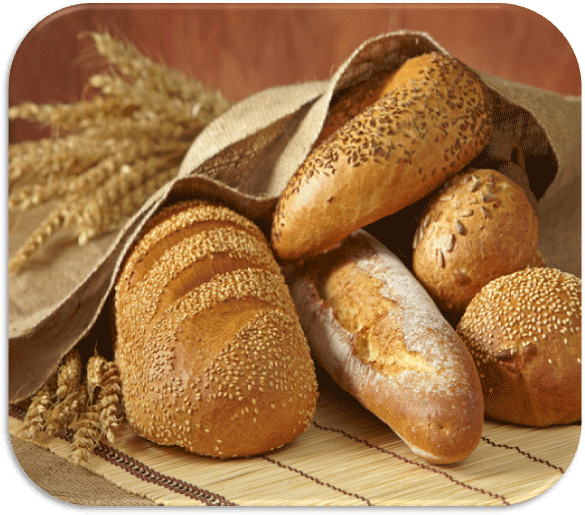Bread-making methods and guidelines

An extract of the original document…
Start by mixing water, flour and yeast
The flour contains protein and starch. The insoluble protein forms a net-like structure called gluten; this is what forms the thin dividing walls of in the cell-like structure of the soft part of the bread. Flour is made primarily (70-80%) of starch granules. Enzymes are another component which influence the chemical and physical reactions during the rising process.
At the end of the bread-making process the differences between one kind of bread and another depend on the method used, involving various phases: planning the work, measuring the ingredients, kneading, first rising, lamination, weighing, resting, shaping, final rising, baking and removing from the oven.
Bread-making methods
Not all flours are the same because t hey do not all have the same amount of protein or enzymes.
In the direct method all of the ingredients are combined in a single operation. It is the simplest method but the end result is a bread with no characteristic taste and which become stale very quickly. A low-protein, high-enzyme flour will be used.
The direct method with starter dough calls for the addition of dough from a previous batch, rich in active yeast.
In the direct method with autolytic dough water and flour are first mixed, left to rest for 4-6 hours and then re-kneaded with the addition of salt, yeast and malt.
With the indirect method on base dough (base dough is defined as a first dough of flour, water and yeast), the initial dough is left to rest in a cool place for 15 to 24 hours at a temperature of 15-18°C. Then other ingredients are added and everything is re-kneaded.
In this method, the flours must be rich in protein content and the enzymes must be made to work slowly; thus the bread will be more crispy, more fragrant, will stay soft for longer, will be more easily digested and much less brewer’s yeast will be needed.
In the natural yeast method which is the most natural and traditional method, much will depend on the baker’s experience; he must know all the different fragrances of yeast and the phases of the rising process which will vary each time. Once bread used to be made in all homes and a certain amount of the dough, rich in yeast and lactic bacteria, would be saved and refreshed daily with water and flour. The bread obtained from this method will have an even texture, will keep for a long time and have a characteristic fragrance.
To be continued…


